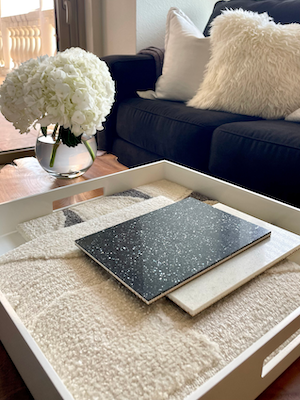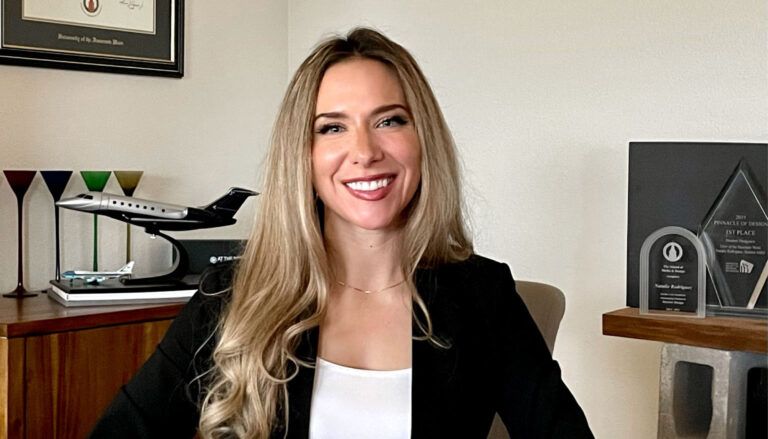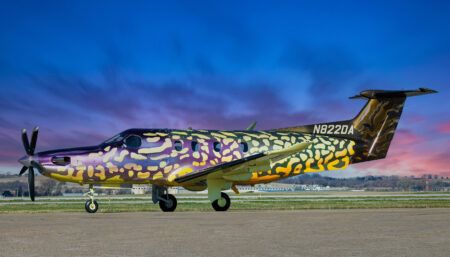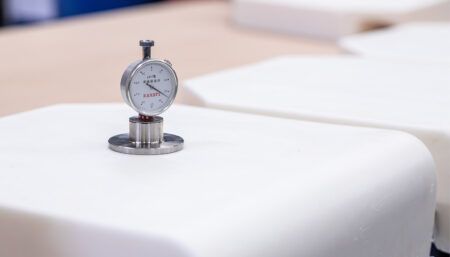Natalie Rodríguez, principal/VVIP aircraft interior designer at Natalie Rodríguez Luxury Design, shares her thoughts on VIP aviation material trends
What aviation material trends have you seen recently?
In the past couple of years, we’ve noticed customers have increasingly prioritised faster turnaround times, so in-stock/quick-ship leathers, fabrics and domestic carpets have been quite popular. For refurbishment projects, many are opting to retain the existing wood veneer, focusing on updating the surrounding soft goods to help aid in downtime. We still receive customised requests, but recently there’s been a reduced demand for extensive customisation. What we’re doing as an industry to encourage sustainable practices has also been a hot topic.
What materials are exciting?
The F/List Shapeshifter design is one of the latest innovations in our industry that thrills me the most, both from a technological standpoint and in terms of the materials used. The materials enable the furniture to ‘bend’ and morph into different shapes. The materials are plant-based with constituents including linseed oil and cornstarch. Mother-of-pearl fragments and other by-products and waste/remnants can be incorporated, which is great from a sustainability standpoint.
My next one would fall under the carry-on/amenities category, but UMŌ Paris has introduced sustainable and cruelty-free duvets made from rare Eiderdown sourced from an Icelandic Eider duck sanctuary. This down is water-resistant, feather-light, highly compressible and retains exceptional warmth, making this the perfect alternative to goose down for VVIP aircraft and beyond. The down also easily retains its shape within the quilts and does not shift due to gravity!
Are you interested in smart materials?
Self-cleaning fabrics, particularly for lighter colour palettes, would be wonderful to see developed further in our niche. I love the idea of self-cleaning materials that break down stains when exposed to UV light. Additionally, hydrophobic fabrics that repel water and dirt could further simplify cleaning and maintenance. It seems fabrics with such properties are coated with nano-materials like titanium dioxide and are often used in outdoor applications. For aviation interiors, we would need these materials to pass burn certification requirements with minimal change in colour, texture and hand.

What should suppliers prioritise for R&D? How can they support customisation?
I would love to see material suppliers further embrace the natural beauty found in by-products that might otherwise be discarded. It would be amazing to see an expanded product range in sustainability from more suppliers. I’m also a fan of all things that have a cruelty-free mission.
I would love to see more customisable options with quick turnaround times across various materials, such as carpets, fabrics, leathers and hard surfaces. Over the last five years especially, there has been an increased sense of urgency among customers eager to fly with minimal downtime.
Can you share a recent standout solution?
One standout project involved a customer who was particularly drawn to carpets from Kalogridis with naturally dyed and undyed yarns. We further customised this by developing an option to pull in some subtle blue hues to complement the throw pillows.
This interview was conducted by Izzy Kington and first published in the September/October 2024 edition of Business Jet Interiors International as part of the Design Forum feature.





